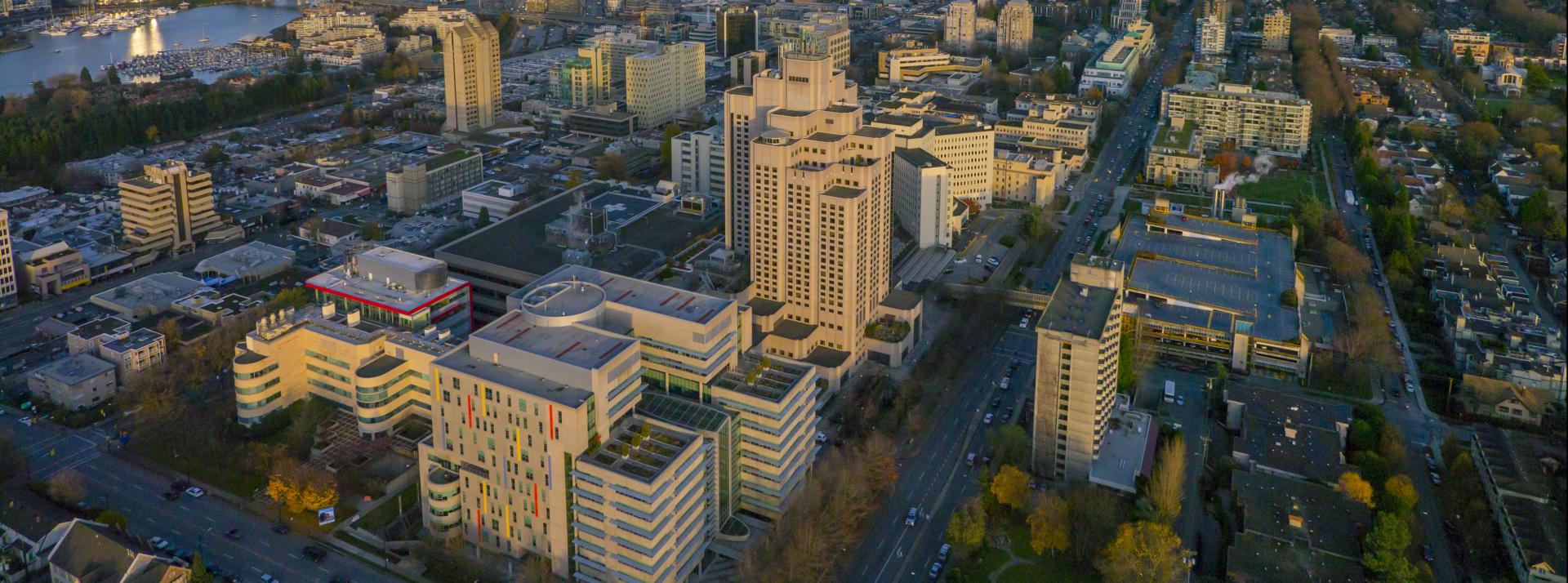Bronchoscopy at Leon Judah Blackmore Pavilion
- 855 West 12th Avenue Vancouver, BC V5Z 1M9
-
- Phone: (604) 875-4111 ext. 54122
Elevator Modernization - Leon Judah Blackmore Pavilion
Due to elevator renovations, some elevators may be out of service or reserved for authorized traffic. If you have an appointment in the Leon Judah Blackmore Pavilion, please give yourself extra time in case of delays. We apologize for the inconvenience and thank you for your understanding while we upgrade our elevators to serve you better.
a bronchoscopy is a test which lets the doctor see into the air passages: the larynx (voice box), trachea (windpipe) and major bronchial tubes. During a bronchoscopy, a thin flexible tube is passed gently through your nose or mouth. There is a tiny camera and light at the end of the tube. This lets the doctor see inside your air passage and take tiny bits of tissue or fluid for the laboratory to test.
Brochoscopy can also take pictures or remove foreign objects. Other reasons why patients may require bronchoscopy include:
- to collect a tissue or cell sample
- to collect a fluid or sputum sample
- to locate areas that may be bleeding to help diagnose infections, or pulmonary edema
- to diagnose lung problems of undetermined cause
How to access
-
Get a referral
A referral is required.
Hours of operation
- Monday: 6:30 a.m. to 2:30 p.m.
- Tuesday: 6:30 a.m. to 2:30 p.m.
- Wednesday: 6:30 a.m. to 2:30 p.m.
- Thursday: 6:30 a.m. to 2:30 p.m.
- Friday: Closed
- Saturday: Closed
- Sunday: Closed
How to get here
Bronchoscopy is located on the ground floor of the Leon Judah Blackmore Pavilion building at Vancouver General Hospital.
Vancouver General Hospital (VGH)
Vancouver General Hospital (VGH) offers specialized health-care services to residents in Vancouver and across the province through regional programs. We provide a full range of basic and highly specialized emergency health-care and trauma services to British Columbia.
Bronchoscopy
a bronchoscopy is a test which lets the doctor see into the air passages: the larynx (voice box), trachea (windpipe) and major bronchial tubes. During a bronchoscopy, a thin flexible tube is passed gently through your nose or mouth. There is a tiny camera and light at the end of the tube. This lets the doctor see inside your air passage and take tiny bits of tissue or fluid for the laboratory to test.


